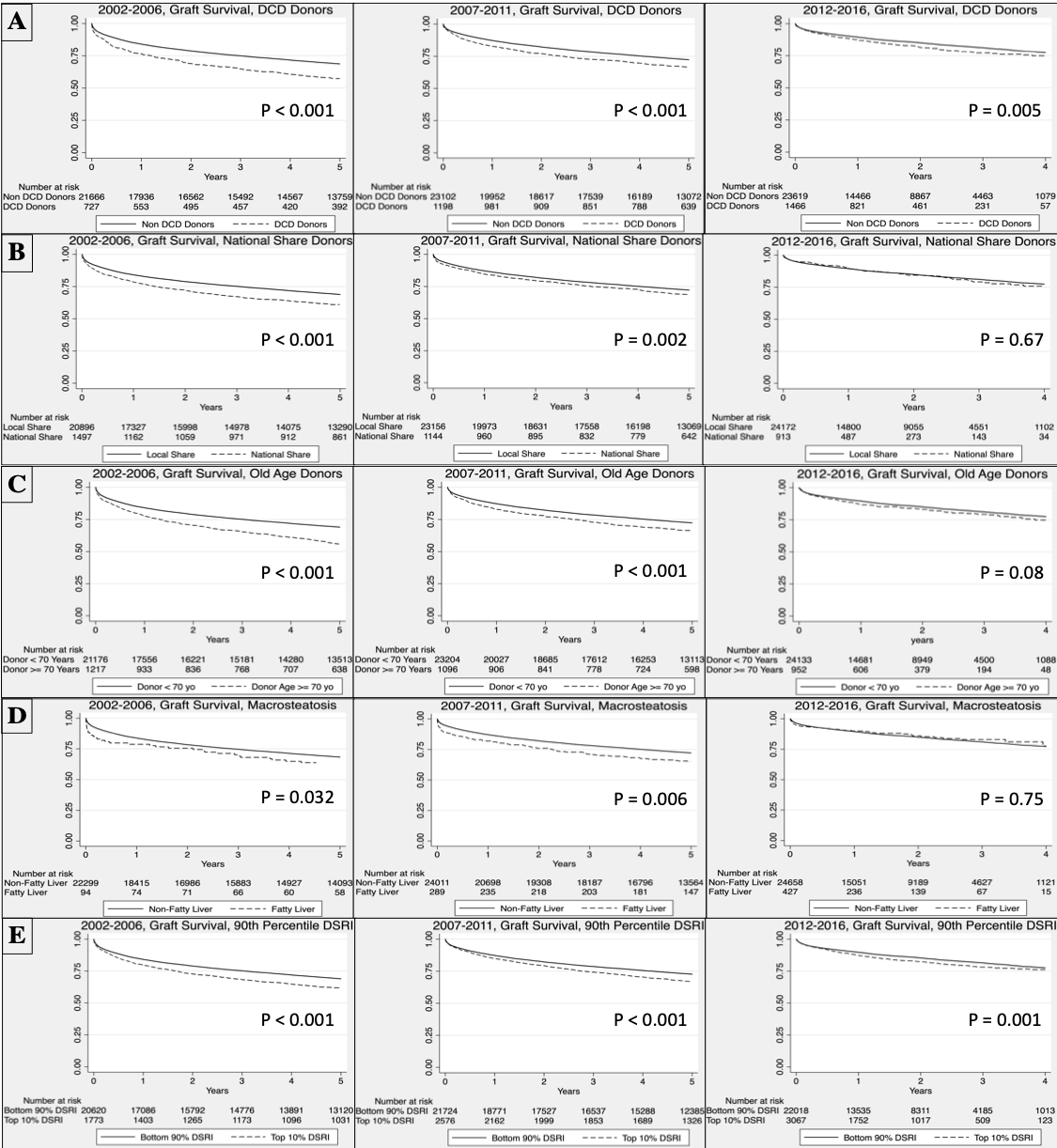Marginal Not So Marginal Anymore: Time for New Definitions for “Marginal” Allografts in Liver Transplantation?
1Medical Student, Baylor College of Medicine, Houston, TX, 2Baylor College of Medicine, Houston, TX
Meeting: 2020 American Transplant Congress
Abstract number: D-115
Keywords: Donors, marginal, Liver transplantation
Session Information
Session Name: Poster Session D: Liver: MELD, Allocation and Donor Issues (DCD/ECD)
Session Type: Poster Session
Date: Saturday, May 30, 2020
Session Time: 3:15pm-4:00pm
 Presentation Time: 3:30pm-4:00pm
Presentation Time: 3:30pm-4:00pm
Location: Virtual
*Purpose: We examined time trends in the outcomes of patients who received marginal liver allografts defined on the basis of the Donor Risk Index [DRI] and five secondary definitions.
*Methods: 70,050 liver transplant recipients between 2002 and 2016 were retrospectively analyzed to last known follow up (n=55,395) or death (n=19,655) using the United Network for Organ Sharing. The study period was divided into three 5-year eras. We used Kaplan-Meier with log-rank test and Cox regression methods to examine the graft following transplantation with marginal allografts; latter defined as 90th percentile Donor Risk Index [DRI] and five secondary definitions.
*Results: DRI, patient Model for End-stage Liver Disease (MELD) scores, and balance of risk (BAR) scores significantly increased over time. Despite sicker recipients, multivariate Cox regression analysis indicates that 90th percentile DRI allograft survival increased across the study period (2002-2006 HR 1.41 (1.34 – 1.49); 2007-2011 HR 1.25 (1.17 – 1.34); and 2012-2016 HR 1.10 (0.98 – 1.24)). By the end of the study period, no significant difference in recipient survival between 90th percentile DRI allografts and benchmark allografts remained (77.7% vs. 80.3%), in part due to a significant decrease in cold ischemia time. Marginal allografts defined using secondary definitions showed similar improvements in graft survival and recipient survival.
*Conclusions: Our data encourages the aggressive use of liver allografts and may indicate a need for a redefinition of allograft marginality in liver transplantation.
Figure 1. 90th Percentile DRI Kaplan-Meier Allograft Survival Over Time. P-values were calculated based on Log Rank Test for Equality of Survivor Functions.
Figure 2. A) Deceased cardiac donor Kaplan-Meier allograft survival over time. B) National share Kaplan-Meier allograft survival over time. C) Donor age over 70 Kaplan-Meier Survival allograft over time. D) Fatty liver Kaplan-Meier allograft survival over time. E) 90th percentile DSRI Kaplan-Meier allograft survival over time. P-values were calculated based on Log Rank Test for Equality of Survivor Functions.
To cite this abstract in AMA style:
Zhang T, Dunson J, Kanwal F, Galvan T, Vierling J, O'Mahony C, Goss J, Rana A. Marginal Not So Marginal Anymore: Time for New Definitions for “Marginal” Allografts in Liver Transplantation? [abstract]. Am J Transplant. 2020; 20 (suppl 3). https://atcmeetingabstracts.com/abstract/marginal-not-so-marginal-anymore-time-for-new-definitions-for-marginal-allografts-in-liver-transplantation/. Accessed November 9, 2025.« Back to 2020 American Transplant Congress


